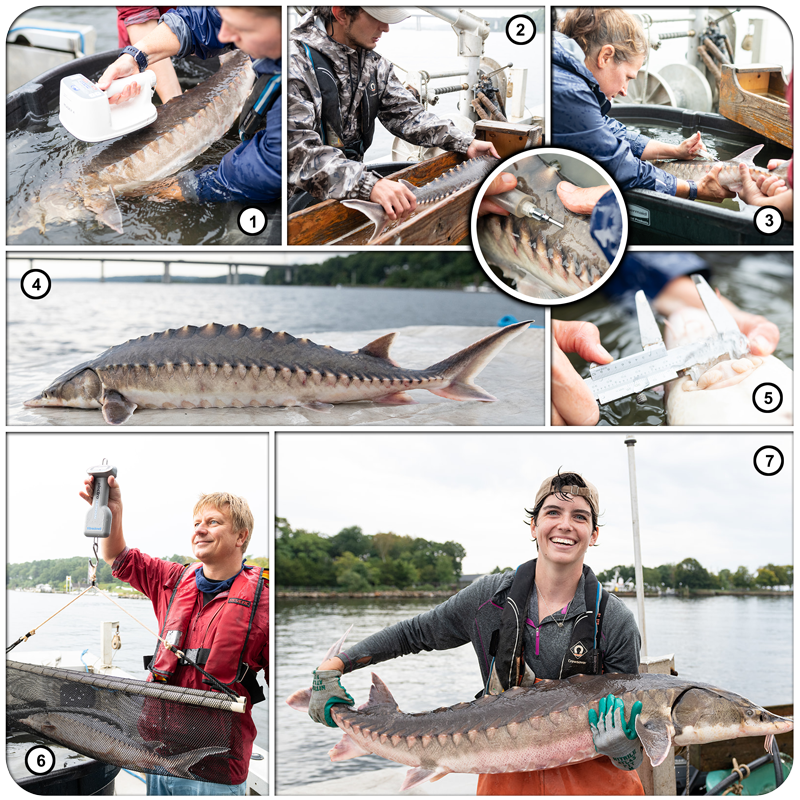28 September 2021. The day started nice enough but soon turned into dark threatening clouds, which the sturgeon researchers that day eyed with concern. Tom Savoy, Deb Pacileo, and Jacque Benway from CTDEEP, along with Kelli Mosca, Steve, Jake, and Hannes started to cast off late morning and slowly motored up the Connecticut River. "We're trying to catch the slack tide to set our sturgeon gill nets" explained Tom, the veteran sturgeon researcher, who has accompanied and steered most monitoring and protection efforts of these iconic fish over the past decades. It was Tom and his colleagues, who in 2014 caught the first baby Atlantic sturgeon in Connecticut River - a potential sign for a long hoped for recovery and the starting point of our project funded by CT SeaGrant.
The day trip was almost over, before it began. The downpour short but relentless and Jacque eyeing the lightening coming from the west with unease. But just before we could decide to fully head back, the radio call from the other boat that several sturgeon had indeed been caught in the gill nets! We therefore proceeded going through the routine measurement protocol that has been implemented for many years and is part of a federal permit to study this endangered species (No. 19641). Even a photograph is considered a sample, which is why we were glad to have our photographer Jacob Snyder (RedSkiesPhotography.com) fully accredited for the trip today. We saw with our own eyes, how a caught sturgeon was first being carefully pried loose from the gill-netting and placed in an aerated observation sump to prevent stress. All individuals are then checked for previously inserted tags using a specialized scanner (1) and if none is found, a new PIT-tag is inserted under the skin with the help of a syringe (3). All sturgeon are also measured for length (2), gape (5) and head width, and weighed (6) before being released back into the water. Tissue samples and in a limited number of fish also fin spine samples are taken for genetic information and growth data, the latter Kelli analyzed for her Masters Thesis.
The potential re-emergence of Atlantic sturgeon spawning in the Connecticut River is a success story of research and conservation, however, these efforts need to be sustained and widely communicated for the success to endure.
